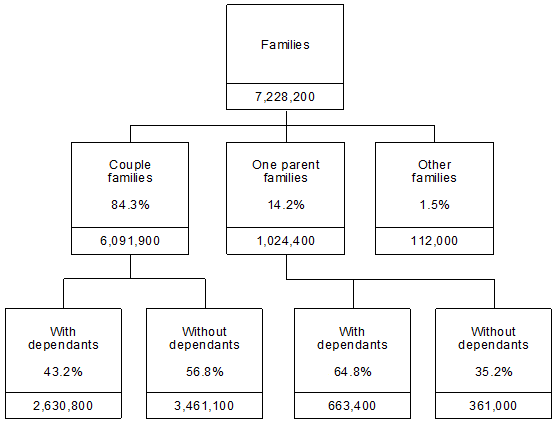What is a family?
A family is defined as two related people who live in the same household. This includes all families such as couples with and without children, including same-sex couples, couples with dependants, single mothers or fathers with children, and siblings living together. At least one person in the family has to be 15 years or over. A household may contain more than one family.
See the Labour Force Status of Families methodology for more information.
